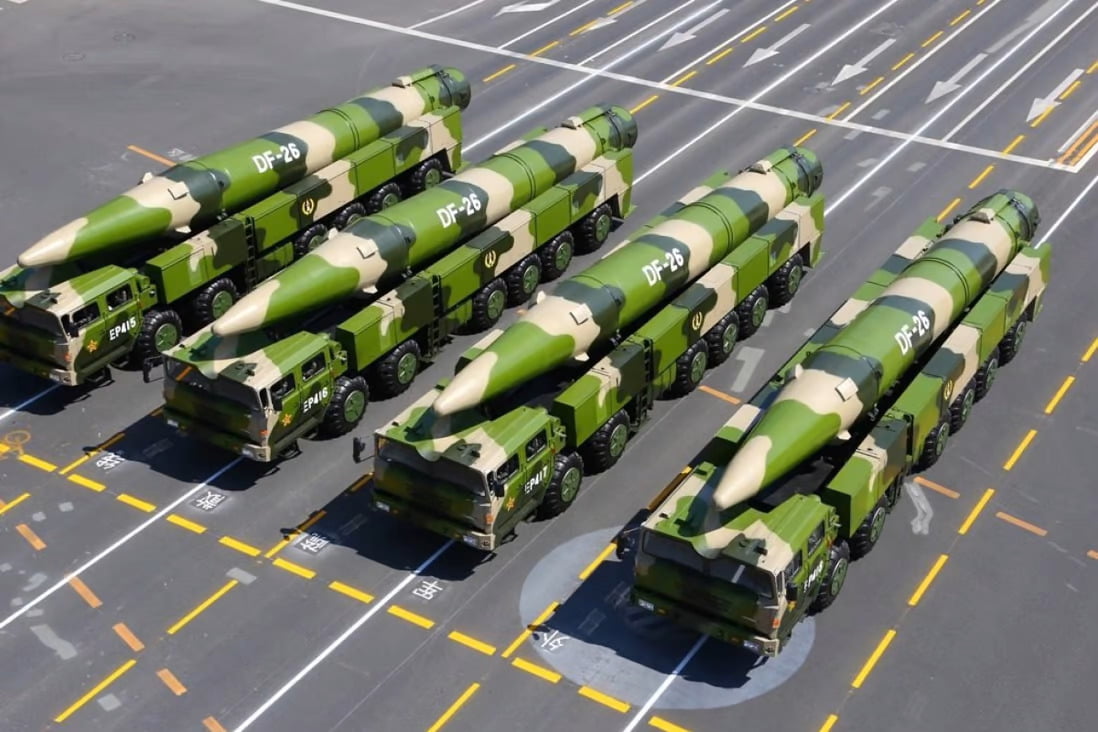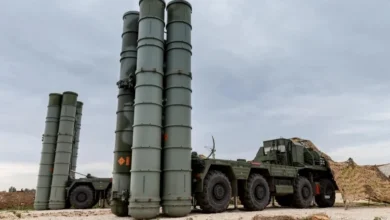Russia Is Creating A Hypersonic Ballistic Missile That Can Cripple US Super Carriers, Akin To China’s DF-26

- The Zmeevik and the Chinese DF-21D anti-ship ballistic missile are also comparable. According to TASS, the DF-26 intermediate-range ballistic missile has a range of up to 4,000 kilometres.
- The US Naval Institute (USNI) asserts that a DF-21D's high kinetic energy and explosive warhead could potentially destroy a carrier in a single attack.
According to two sources close to the Russian military department and the military-industrial complex, Russia is developing a new “carrier killer” – ballistic missile called the “Zmeevik” with hypersonic combat gear for the Navy.
“For a considerable amount of time, the Zmeevik ballistic missile with hypersonic combat equipment has been under development. According to a source cited by TASS, it will be built to destroy large surface targets, notably aircraft carriers.
The new missile may be used by Russian Navy coastal missile units, according to a different source cited by TASS.
It’s interesting to note that Russia is also creating a new coastal missile system to fire the Tsircon (or Zircon) hypersonic cruise missile, which can strike both land-based and maritime targets.
Only the sea-based and aircraft versions of the Tsirkon, which had a range of more than 1000 kilometres and a top speed of Mach 9, are now known to exist (11,113 kilometres per hour).
Tsirkon is regarded as a hybrid cruise-ballistic missile, as opposed to pure hypersonic missiles that are propelled by air-breathing scramjet engines, and has been dubbed “invincible” by President Putin.
The missile is said to be able to avoid even the most advanced American air defence systems. The air pressure in front of the missile is supposed to create a plasma cloud that traps radio frequencies, making it nearly invisible to radar systems due to its extremely high speed.
Experts assert that the Tsircon missile could easily overcome the US Aegis Combat System and sink even the most technologically equipped American aircraft carriers.
In preparation for the possibility that an American aircraft carrier might approach the Russian coast, the Russian Navy is preparing coastal defence capabilities.
China, Russia Concerned About US Aircraft Carriers
The Zmeevik and the Chinese DF-21D anti-ship ballistic missile are also comparable. According to TASS, the DF-26 intermediate-range ballistic missile has a range of up to 4,000 kilometres.
Beijing and Moscow are both concerned about the US Navy’s intentions to maintain a fleet of 12 nuclear-powered aircraft carriers, which they believe will give the US a technological advantage at sea. Russia only has one aircraft carrier, while China currently has three with a fourth on order.
The land-based Dong Feng-21D (DF-21D), also known as the “carrier killer” missile with a range of 1,500 kilometres, is at the core of China’s strategy to thwart any US military intervention off its eastern coast, according to a recent report by EurAsian Times.
In addition, EurAsian Time reported on a target range in Xinjiang’s remote Taklamakan desert where the Chinese military created targets in the shape of two Arleigh Burke-class destroyers and a Ford-class US aircraft carrier to rehearse pinpoint anti-ship attacks with DF-21D missiles.
Top US military officials were concerned about China’s maritime capabilities, according to a report by the US Congressional Research Service published in March. It claimed that the US Navy would be effectively barred from a region roughly a thousand miles off China’s coast by China’s arsenal of anti-ship ballistic missiles (ASBMs).
Additionally, Vice Admiral Jack Dorsett, then-head of US Naval Intelligence, acknowledged to a reporter in January 2011 that the US Navy had miscalculated China’s production and deployment of the DF-21D missiles.
The US Naval Institute (USNI) asserts that a DF-21D’s high kinetic energy and explosive warhead could potentially destroy a carrier in a single attack.
Given its 4,000 km range, the DF-26 missile is viewed as posing a greater threat to the United States. The missile has the ability to pose a danger to US forces in a wider area of the Indo-Pacific, including their vital Anderson Air Base on Guam. It is for this reason that many defence analysts frequently refer to the missile as the “Guam Killer.”







Facebook Comments